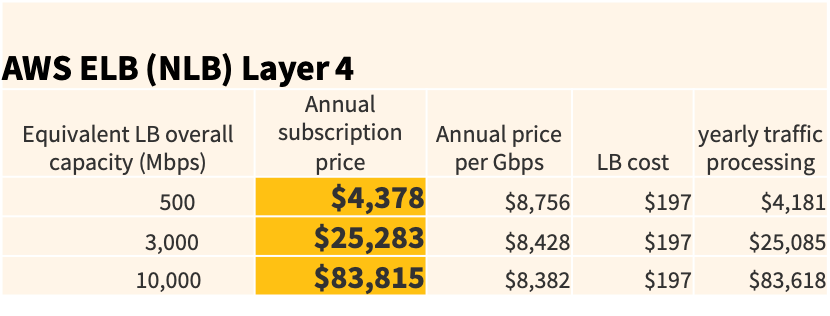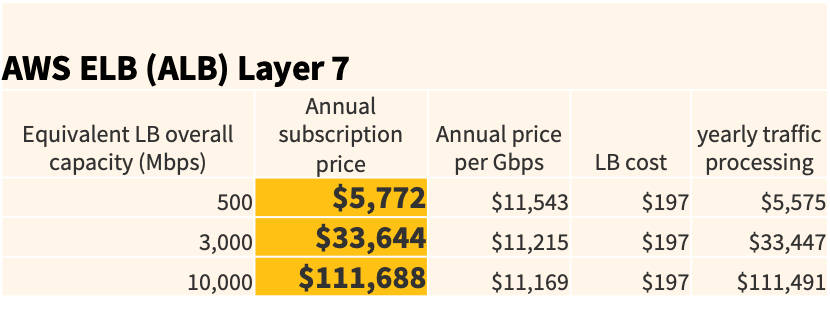Cloud-first deployment is the choice of many organizations when they are looking to roll out new applications and services, or when they come to upgrade existing ones. The benefits of Cloud deployment are well known and don’t need repeating here.
In many scenarios, deploying in the Cloud does not remove the need to have multiple virtual servers to deliver applications and services. If anything, deployment in the Cloud means that the potential user base will be larger than when applications were hosted on private infrastructure. This means that the need to intelligently spread the user load across application server instances has not gone away.
Load balancers are the way to make sure that incoming access requests are allocated to a server that is capable of optimally handling them. Deploying to the Cloud does not mean that load balancers are obsolete. This is evidenced by the fact that the major public Cloud providers make cloud-based load balancing services available. Amazon provides AWS Elastic Load Balancing, and Microsoft provides Azure Load Balancer.
Cloud provider load balancers are basic offerings that do not provide the power and flexibility required for modern application architectures and deployment models. Kemp LoadMaster is Cloud-native and is a much better option. It is both more powerful, and it works out to be cheaper than the native offerings.
In this post, I’ll take a look at the AWS load balancing options and compare them to LoadMaster. If you’d like a similar comparison to Microsoft’s Azure Load Balancer, then reach out and let me know.
AWS Load Balancing Options
AWS has three load balancer options. Two are current, and one that is only supported on legacy infrastructure. The three AWS options are:
- Application Load Balancer – best suited for load balancing HTTP/HHTPS traffic. It provides the ability to route requests within a modern application deployment model using virtual machines, containers, and microservices all working in concert to deliver and application or service. Works at Layer 7 and operates within Amazon Virtual Private Cloud (VPC) instances.
- Network Load Balancer – load balances network traffic at what can be considered Layer 4. Provides protocol based load balancing on TCP, UDP, and TLS traffic on the network. Connections are routed to targets on VPC. Millions of operations per second are supported by AWS Network Load Balancer, and sudden changes in traffic can be handled without the load balancer being overloaded.
- Classic Load Balancer – provides basic load balancing for applications and services deployed from the classic Amazon EC-2 Cloud infrastructure. It load balances across Layer 4 and Layer 7 protocols but is not available for load balancing new deployments outside of EC-2.
Kemp Load Balancing in the Cloud
Kemp LoadMaster is available within the public Cloud providers Marketplace stores, and it is also available as a Virtual LoadMaster (VLM) virtual image for use if you are building a Cloud based infrastructure using assets outside of the Marketplace options. For completeness, I’ll also mention that hardware device versions of LoadMaster are available for rack mounting if your deployment model requires that. Some of the hardware devices have dedicated SSL/TLS processing components to speed up encryption processing in SSL/TLS offloading scenarios.
Using LoadMaster in the Cloud in preference to the AWS (and Azure) native load balancers brings many benefits. For example:
- Flexible deployment options – deploy from Marketplace or via VLM to wherever load balancers make the most sense in your deployment model. Including in hybrid-cloud deployments.
- Better performance – LoadMaster leads the market in performance. This extends to our Cloud and VLM instances. LoadMaster can also do content switching based on data types to route incoming requests to the appropriate servers (such as dedicated video streaming servers, for example).
- Granular load balancing algorithms – LoadMaster supports eight tried and tested load balancing algorithms that allow for more precise and targeted management of incoming access requests. The native AWS load balancers only support two algorithms.
- Better health checks – monitoring target servers to see how they are operating is a core part of load balancing. LoadMaster has full Layer 7 checking that is customizable for any protocol. AWS only supports Layer 4 handshake and simple HHTP status code checks at Layer 7.
- Authentication – integrate and simplify advanced authentication and authorization for Cloud based applications. Use multi-factor authentication and other secure login techniques that are essential today.
- Web Application Firewall (WAF) – LoadMaster has an industry-leading WAF that provides additional application security at Layer 7. This is fully functional in Cloud deployments.
- Global Server Load Balancing (GSLB) – route traffic to geographically separate Cloud providers anywhere on the globe to provide disaster recovery and handle traffic spikes due to time zone access changes.
- Flexible licensing options – LoadMaster works out cheaper than the native Cloud load balancer offerings (See below).
- World-leading support – Kemp provides world-beating support options. Support queries are allocated to a human support operative who then owns that ticket until it is closed. There is no passing of support tickets up through support levels. Kemp’s support team has a customer satisfaction score of 99%!
Costs for Kemp versus AWS in the Cloud
The tables below show the costs for both kinds of AWS load balancers, and also for deploying LoadMaster in AWS. The cost savings are stark. With LoadMaster you get a better load balancer at a fraction of the cost.
The AWS Layer 4 load balancer costs:

The AWS Layer 7 load balancer costs:

The costs for the AWS load balancers start high and then get astronomical! LoadMaster pricing tells a different story:

What? Where’s the catch? There isn’t one. With LoadMaster you get a more feature-rich and powerful load balancer, with a dedicated human support team, at a fraction of the cost.
Try LoadMaster Free and See the Benefits
If you want to try LoadMaster for yourself, then visit the dedicated free trial site at https://kemp.ax/try.
If you want to talk to someone in Kemp about LoadMaster or our other solutions, then visit our Contact Us site, or reach out to me.

